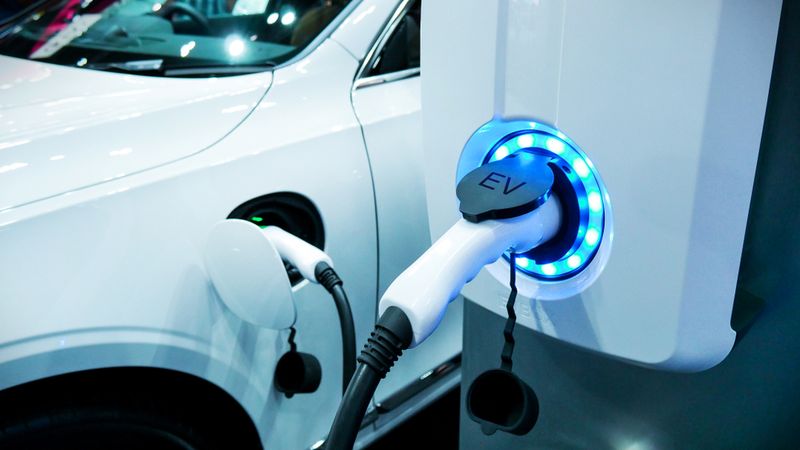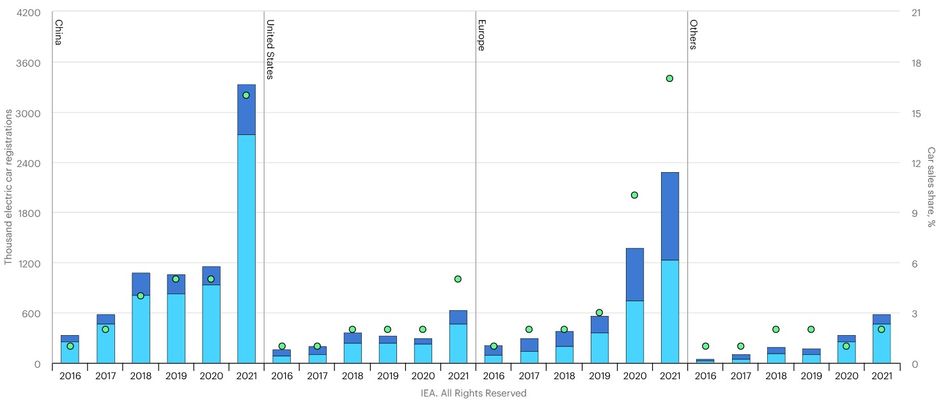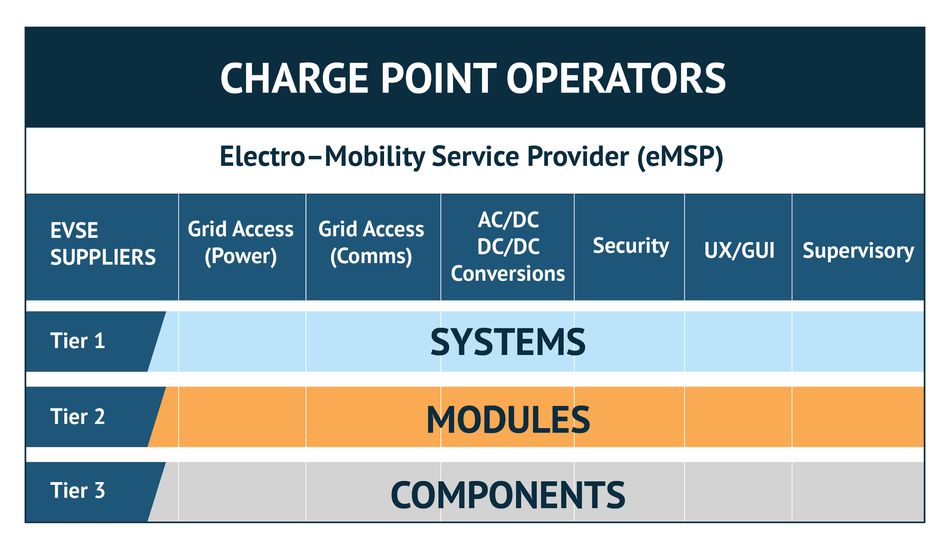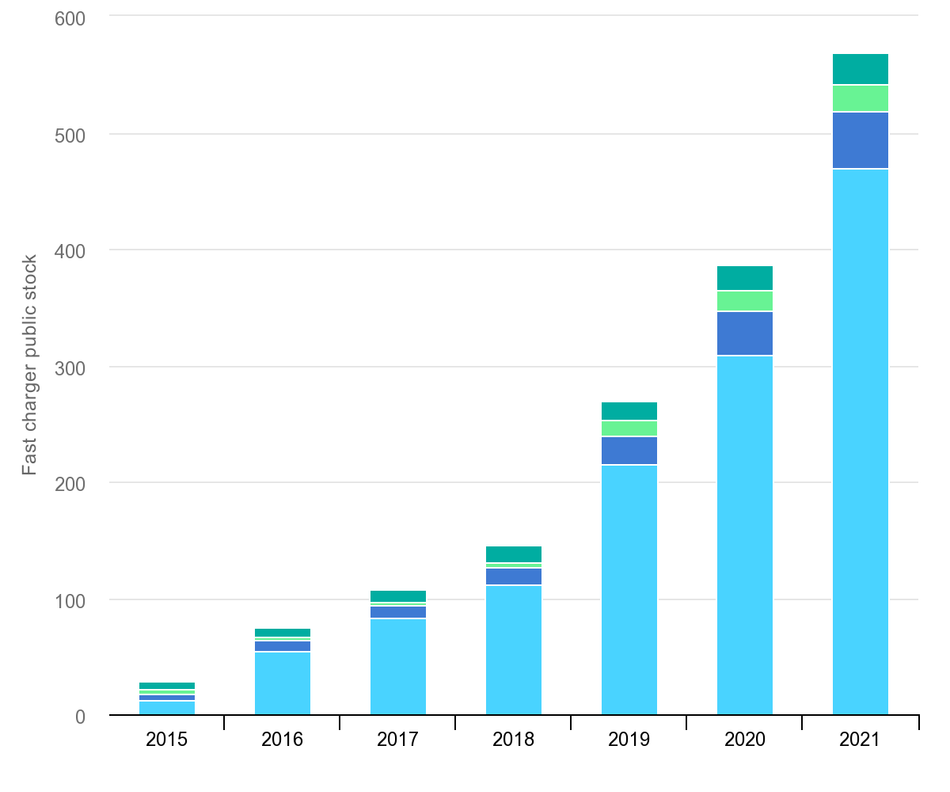The future of EV charging
The challenges of EV charging must be addressed quickly to ensure the rapid adoption of electric transportation.
This article is based on the whitepaper EV Charging: The fourth transport infrastructure published by Avnet.
DOWNLOAD THE FREE WHITEPAPER HERE.
An urgent call to action
The urgency to transit towards a low-carbon economy is opening opportunities for several industrial sectors to decarbonize their products, processes, and services. In the case of the transport sector, where around 11.6% of the total global emissions are emitted on road transport operations(1), the opportunities for replacing traditional internal combustion vehicles (ICE) with electronic vehicles (EVs) are immense.
The increasing sales of EVs in markets normally dominated by ICE vehicles are one of the several signals indicating that this needed change is already taking place.
However, to make the shift toward a sustainable transport system, new batteries or EV models need to be developed and produced sustainably and affordably. But most importantly, if EVs are to substitute conventional vehicles, proper, effective, and efficient infrastructure needs to be put in place to provide energy to an increasing fleet of EVs.
This article covers a brief history of EV charging infrastructure. It studies the challenges and opportunities paving the road to sustainable transportation and introduces some of the current trends shaping the EV charging segment as presented by AVNET Abacus in its more recent white paper “EV Charging: The Fourth Transport Infrastructure”.
A Brief History Of EV Charging
EV charging has a long history, probably as old as EVs themselves when the first models of electrically powered vehicles appeared in France and England in the late 1890s(2). EVs started to become an apparent option to facilitate transportation, and a wave of inventions was unleashed across the world, making EVs a suitable option for mobility at the time.
In the early 1900s, commercial EVs reached a range of 18 miles (not so much!), but they were quieter, more stable, and less polluting options compared to steam or fuel vehicles. Powered by the first attempts at replaceable batteries, the idea of public charging stations for EVs was moving from a vision to reality.
Some attempts to build the first public charging points were eventually made. General Electric made publicly available the so-called “Electrant” and by 1912 public charging was available using Mercury Arc Rectifiers, which would convert AC into DC. The future of this technology was looking promising.
However, EV autos as well as EV charging would disappear for some years from the market. The vast availability of fuel cars capable of driving long distances, together with the discovery of petrol reserves in the USA and the industrious force of Henry Ford to make ICE cars better and affordable, turn out to be factors shifting society towards the use of ICE vehicles.
For EVs, the circumstances only changed in the 60s and 70s when an oil crisis occurred. Equally important, the impact of burning fuel started to become evident, and pollution became a public concern.
At the same time as these important events, advances in battery technology like 6-volt lead-acid or Lithium-Ion batteries facilitated EV major autonomy (2), allowing electrical charging to be more attractive for industries and governments and as an option for the replacement for volatile oil markets.
Charging was increasingly possible, but users would only be able to load cars at households or private charging points connected to the regular grid.
In the 1990s, though, history would be changed. The Toyota Prius was the most successful EV, and the need for proper, widely deployed charging points that surged in Japan was the prominent moment to focus on developing proper charging infrastructure that would suffice an explosive demand for EVs(3).
By 2008, automakers like Tesla surprised the market with incredible technologies, allowing the EV to become the central point of attention for mobility. Thus, opening the stage to accelerate the construction and installation of charging points in public spaces managed directly by automakers. Points with 7Kw and a maximum of 22Kw were the most common possibilities for energy loading allowing cars to be loaded from 2 to 4 hours.
By 2012, Japan would have 1,831 public DC fast-charging stations leading to the deployment of charging infrastructure. Only China in the present time will surpass industrialised countries like USA, Germany, or Japan with an incredible rate of 30.000 new installed systems per month to provide an overwhelming number of new EVs with energy in the inner and outer skirts of cities(4).
EV Infrastructure Current Trends
The history of EVs and charging infrastructure has been incredibly dynamic. Today, there is no doubt about the impact that innovation has brought on transportation, especially in the e-mobility sector. Governments, citizens, entrepreneurs, and several actors across supply chains are learning to take advantage of the current EV market situation and are building the path towards an interesting, electrified future.
To provide a picture of opportunities and challenges, we picked two trends impacting the evolution of charging infrastructure are:
1. Do higher EV sales equal major deployment of infrastructure?
Around the world, the adoption of EVs is rapidly expanding. Sales of EVs have escalated worldwide from just 120.000 in 2012 to more than 6.6 million units in 2021 (5). Together with this rapid tendency, charging infrastructure has also gone through incredible improvements. For example, publicly available charging points have approached 1.8 million stations globally, with nearly 600.000 fast charging units installed in open spaces (6).
In China, 50% of annual growth is expected in the years to come. As a result, more businesses are entering the EV charging market by offering digitised solutions to make stations more user-friendly or support with maintenance and other services on the expanding charging web (4) (See Figure 1). Avnet reports that the EV charging ratio is currently 3:1 in the country, but the projected growth is expected to leverage the numbers.
Other players like India, despite its increasing interest in EVs, is an important niche of yet unexplored markets. Charging points for two-wheeled vehicles are becoming more important as this type of mobility is preferred. Services like battery management systems or Tier 1 solutions (see Figure 1) and motor control solutions or Tier 2 solutions are some of the businesses with the highest potential in this country.
The US and Germany expect exponential growth as well, as more citizens are replacing ICE vehicles. Considering these events, traditional automakers know the reality that ICE vehicles face in the future, hence, their entire manufacturing infrastructure is being updated to fully offer EVS by 2035.
Despite the momentum that infrastructure development is experiencing, the current supply is not enough. If countries like Germany want to decarbonize the automobile industry by 2030 the speed of deployment needs to be accelerated. Alone in this country, circa 50.000 charging stations are currently available, representing less than 90% of the 1 million charging stations expected to be available by 2030.
In the long term, a wide range of opportunities are available in the EV market. But sales of EVs are pressing for more infrastructure, and fulfilling the goals of electrified mobility is only possible with the right combination of steps forward.
2. Energy availability and cooperation
Many countries around the world are suffering the consequences of unstable energy markets, scarcity, and dependency on foreign oil. For EVs to support climate goals and serve as a platform to make the transport industry less susceptible to oil-related issues, the share of renewables needs to be pumped to compete without problems against fossil alternatives. Because several thousand locations and charging points need to be developed over the next 10 years, ensuring the continuous availability of energy and connectivity to renewable sources is key.
However, actors in the EV industry are confident of the future for EV charging solutions(4), as the momentum for renewables is stronger than ever under the circumstances imposed by human accelerated climate change.
Because of government commitments to increase renewable infrastructure, a direct positive impact is expected to occur on EV charging availability. Hence, the energy transition together with the growth of EV infrastructure are 2 of the most important events that will help to develop smart grids and integrate many other technologies that could lead to futuristic visions such as autonomous mobility.
Nonetheless, several political and bureaucratic challenges need to be solved while the deployment of charging points occurs. Without proper, safer, and easy-to-use infrastructure to rapidly charge EVs, there are no real chances to compete against traditional vehicles.
The entire transport system has been built with the idea that fossil resources are finite and that replacements for ICE will never happen. From the crisis the opportunity arises and the energy crisis of 2022 seems to be an ideal scenario to finally push the construction of state-of-the-art EV infrastructure.
Looking Forward
The above-mentioned trends are just a few in a pool of factors transforming the EV ecosystem. Urban development, project finance, technology adoption, and even the availability of scarce materials that are essential for the manufacturing of green tech are shaping the future of EVs.
Regardless of the world's circumstances, the transition towards electric mobility is here to stay, and companies looking into the charging market need to look into future developments.
Technologies like microelectronics essential for fast charging are some of the fields with big potential for start-ups or businesses in the market of DC fast charging stations(4). These technologies with the capability to support up to 120 kW charging are key to the rapid charging of EVs(7).
Other innovations like cloud-based EV charge systems are surging as solutions to improve the connectivity of EVs with charging platforms, allowing precise charging, and billing, preventing security breaches, and even improving user experience(9).
But beyond technology, there is a strong need for deep collaboration between stakeholders who are participating in the development of EV infrastructure as well as EV manufacturing. The automotive industry, chip and battery developers, governments, academic institutions leading research, and consumers need to a certain instance work together. This is particularly important due to the need to strengthen the transformation of the transport sector that allows a smooth integration of EV infrastructure.
A societal consensus is needed - supplemented by pragmatic solutions.
Summary
The development of the right infrastructure is still an issue that needs to go along with the rapid adoption of EVs. For instance, the opportunities to move away from ICE vehicles to EVs require collaborative efforts to allow a sustainable and successful transition of the transport systems. Companies are jumping into the opportunities exposed by the lack of charging infrastructure, and governments need to provide the mechanisms to allow massive expansion of technological innovation. Hence, replacing old infrastructure and providing the standardisation and regulation that helps deploy enough charging stations.
E-mobility brings tremendous opportunities and the gates to a new era of transportation are opening. Autonomous driving, smart electricity grids, smart and fast charging points, or even a culture of shared ownership would lead us to an age of sustainable transportation.
This article is based on the whitepaper EV Charging: The fourth transport infrastructure published by Avnet. To learn more about the future of EV charging, download the free whitepaper.
Download the free whitepaper here.
References
1. Ritchie H, Roser M. Global greenhouse gas emissions by sector [Internet]. Our World in Data. 2016. Available from: https://ourworldindata.org/emissions-by-sector
2. Handy G. History of Electric Cars. Edison Tech Cent [Internet]. 2015;(April):1–17. Available from: http://edisontechcenter.org/ElectricCars.html
3. Solutions SR. The Evolution of Charging Stations [Internet]. 2021. Available from: https://www.shell.com/energy-and-innovation/mobility/mobility-news/shells-growing-public-ev-charging-network.html
4. Foj T, Nakel T, Wilson H. EV CHARGING : The fourth transport infrastructure. Phoenix; 2022.
5. IEA. Global EV outlook 2022 [Internet]. International Energy Agency. 2022. Available from: https://www.iea.org/data-and-statistics/data-product/global-ev-outlook-2022
6. IEA. Trends in charging infrastructure [Internet]. Global EV Outlook 2022. 2022. Available from: https://www.iea.org/reports/global-ev-outlook-2022/trends-in-charging-infrastructure
7. STM. EV Charging [Internet]. STM Microelectronics EV Charging. 2022. Available from: https://www.st.com/en/applications/electro-mobility/ev-charging.html
8. STMicroelectronics. The challenges and opportunities for powering electric vehicles Understanding charging technology for battery electric vehicles. 2020.
9. NXP. NXP Solutions for connected EV charging [Internet]. 2022. Available from: https://www.nxp.com/applications/automotive/powertrain-vehicle-dynamics/electrification/ev-charging-station:EV-CHARGER-STATION






